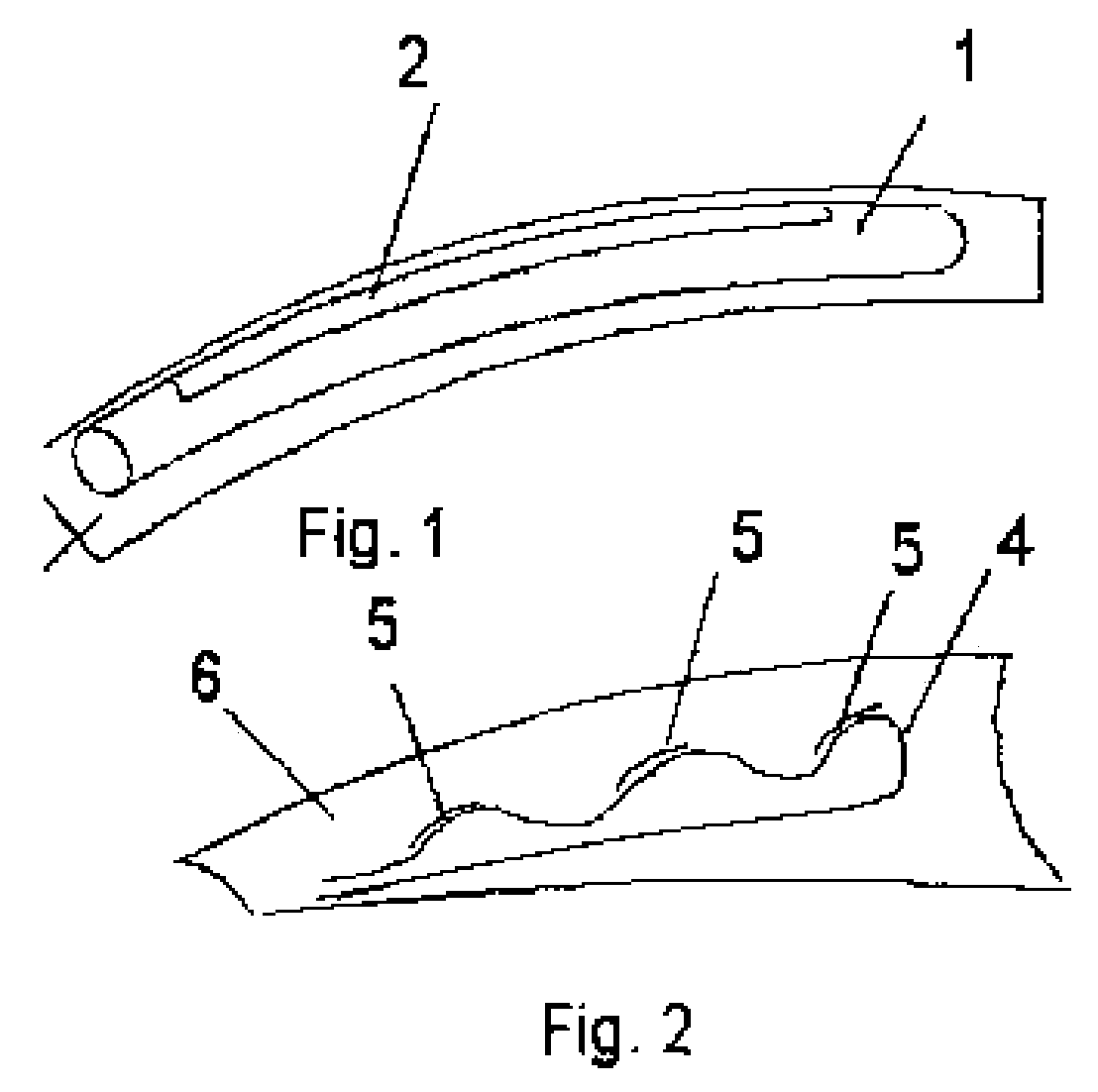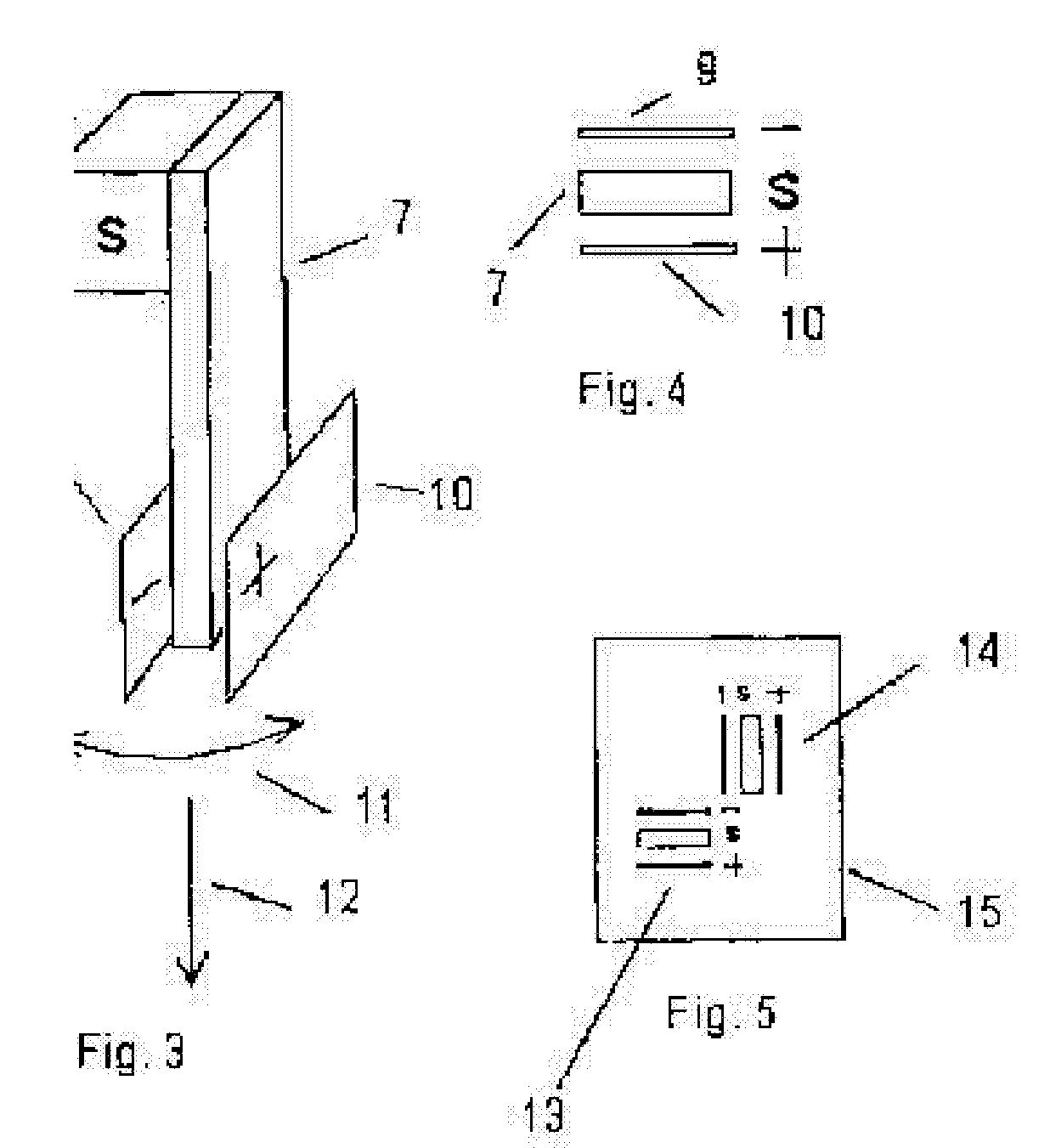Shape-acceleration measurement device and method
a measurement device and acceleration technology, applied in the field of shape acceleration measurement devices and methods, can solve the problems of inability to provide continuous real-time measurement and/or tracking dynamic shapes, tilt sensor technologies do not measure dynamic acceleration, lack of calibrated, deformable, portable substrates to hold sensors and protect, etc., to improve the accuracy of prior art methods, accurate measurement, and low cost
- Summary
- Abstract
- Description
- Claims
- Application Information
AI Technical Summary
Benefits of technology
Problems solved by technology
Method used
Image
Examples
Embodiment Construction
[0051]FIG. 1 shows a fiber optic sensor capable of sensing bend which is described in detail in Danisch '257. It comprises a fiber 1 treated to lose light on one side through a loss zone 2, preferably along the entire length over which bend is to be sensed. The optical design is such that bend is integrated along the treated portion of the fiber. The optical intensity transmitted through the fiber is modulated according to the net angular displacement between ends of the treated region, regardless of path. The sensor may be attached to a bendable substrate 3 to sense the bend of the substrate.
[0052]FIG. 2 shows an extension of the bend-sensing method of FIG. 1, which is explained in detail in Danisch '672. An optical fiber 4 has been sinuated along a substrate within a sensing region which is approximately the full length of the sinuations shown. On portions 5 of the fiber 1 approximating a 45 degree orientation to the long axis of the substrate, the fiber is treated to sense curvat...
PUM
 Login to View More
Login to View More Abstract
Description
Claims
Application Information
 Login to View More
Login to View More - R&D
- Intellectual Property
- Life Sciences
- Materials
- Tech Scout
- Unparalleled Data Quality
- Higher Quality Content
- 60% Fewer Hallucinations
Browse by: Latest US Patents, China's latest patents, Technical Efficacy Thesaurus, Application Domain, Technology Topic, Popular Technical Reports.
© 2025 PatSnap. All rights reserved.Legal|Privacy policy|Modern Slavery Act Transparency Statement|Sitemap|About US| Contact US: help@patsnap.com



